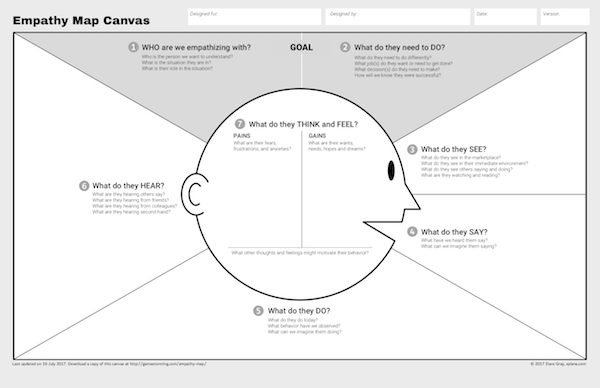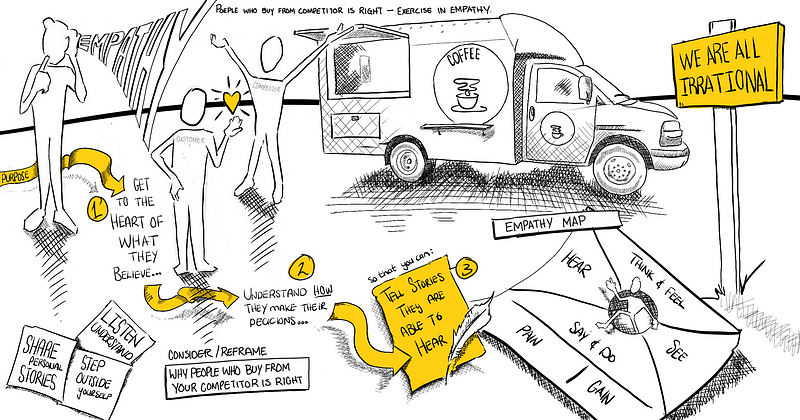The real reason we sucked
The real reason we sucked
“We lost on price Werner”, I’ve have heard this so many times before. Exhausted, grinding my teeth I catch myself responding in a moment of weakness, “They [the client] will be back, we’ll have to go in and fix their [the competitor] screwups soon.”
Failing forward
Losing sucks. We all fail;
There are many strategies for winning, but when it comes to losing it boils down to, ‘suck it up’, ‘learn from it’, ‘could have, should have’ and ‘move forward’. What’s the actual strategy for losing?
Start Empathy
‘He who exercises no forethought but makes light of his opponents is sure to be captured by them.’ — Sun Tzu.
I am a sensitive human-being with insecurities and a fragile ego. It tainted the way I analysed failure. The revelation came once, I took myself out of the equation.
The Process:
To create a meaningful fail-forward-narrative, you have to identify the most influential individuals and adopt their worldview — I found an empathy map to be an excellent tool to streamline the process.

Shape the plot, through this lens: “People who buy from [your competitor] is right.”
It takes practice, and some detective work but once you get the hang of it, you’ll be surprised what you find. I’ll share three from my personal favourites.
Recap: Contectx is, ‘People who buy from (your competitor) is right’. The following narrative is from the perspective of a prospective client.
What he [Client] saw
“I met their Partner; he arrived without the usual expensive entourage. He introduced us to flamboyant young man, who enthralled us with his passion. We were excited to learn that this was going to be the actual person who would be taking care of the project. They also dialled in the rest of the team to introduce them, and I had an opportunity to ask them a few questions. Oh, the fact that they weren’t wearing expensive suites was refreshing.
No slides and generic documents, just straight talk. I could see they spent their preparation time exploring some of the challenges we face.”
What she [Client] said
“Your approach was refreshing; we did not see any generic methods. I can see how your team will slot into our business processes. The prototype you built to demonstrate the potential solution showed us that you understand our challenge. It feels like we could start tomorrow.”
What she [Client] felt
“The CEO is relying on me to turn this project around. Any delay will result in further losses to the company. They were excited about helping me solve this problem, and I felt their enthusiasm.
The CIO is retiring early, and if this project is a success, I will be in line for the job. They can help me win.”
Reflection
Empathy comes from understanding the sacrifices a customer has to make to use your product or service. Deep needs go beyond what a brief [or RFP] declare implicitly.
Once I placed myself in the shoes of my customer and looked at the competitor, I was able to see a truth about myself.

